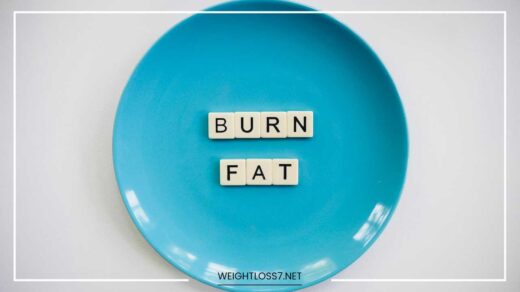Healthy Eating Habits for Sustainable Weight Loss

Healthy Eating Habits
Healthy Eating Habits for Sustainable Weight Loss
Achieving sustainable weight loss is not a sprint but a marathon. It involves more than just adopting a temporary diet; it requires a comprehensive approach that includes making long-lasting changes to your eating habits and lifestyle.
This guide will delve deeply into the principles of healthy eating, offering actionable strategies and practical advice to help you reach and maintain your weight loss goals in a sustainable manner.
Understanding the Basics of Healthy Eating
To lay a solid foundation for weight loss, it’s essential to understand and embrace the core principles of healthy eating. These principles not only support weight management but also promote overall well-being.
Balanced Diet
A balanced diet is fundamental for achieving and maintaining a healthy weight. It involves incorporating a variety of nutrient-dense foods from all food groups into your daily meals. Here’s how you can achieve balance:
- Fruits and Vegetables: These should form the cornerstone of your diet. Aim to fill half your plate with vegetables and fruits at each meal. They are low in calories and rich in essential vitamins, minerals, and fiber. Fiber helps keep you full and supports digestive health.
- Whole Grains: Choose whole grains like brown rice, quinoa, oats, and whole-wheat products over refined grains. Whole grains retain more nutrients and fiber, which can help with satiety and blood sugar control.
- Lean Proteins: Incorporate sources of lean protein, such as chicken breast, turkey, tofu, beans, lentils, and fish. Protein helps build and repair tissues and is crucial for muscle maintenance, especially when you’re losing weight.
- Healthy Fats: Don’t shy away from fats; just choose the right kinds. Include sources of healthy fats such as avocados, nuts, seeds, and olive oil. These fats are essential for hormone production and can help with satiety.
Portion Control
Portion control is vital for managing calorie intake and preventing overeating. Even healthy foods can contribute to weight gain if consumed in excess. Here are some tips for controlling portions:
- Use Smaller Plates: Eating from smaller plates can help you naturally reduce portion sizes without feeling deprived.
- Mind Your Servings: Be aware of standard serving sizes. For example, a serving of meat should be about the size of a deck of cards, and a serving of grains should be about the size of a tennis ball.
- Avoid Eating from the Bag: When snacking, portion out your food into a bowl rather than eating straight from the bag. This can help prevent mindless overeating.
Mindful Eating
Mindful eating involves paying full attention to the experience of eating. It can help you better recognize hunger and fullness cues and improve your relationship with food. Here’s how to practice mindful eating:
- Eat Slowly: Take time to chew your food thoroughly and savor each bite. Eating slowly allows your brain to register fullness, which can prevent overeating.
- Focus on Your Meal: Avoid distractions such as watching TV or using your phone while eating. Concentrating on your meal helps you be more aware of what and how much you are eating.
- Listen to Your Body: Pay attention to your hunger and fullness cues. Eat when you’re hungry and stop when you’re satisfied, not when you’re full.
Hydration
Proper hydration is crucial for maintaining health and supporting weight loss. Water is essential for digestion, metabolism, and satiety. Here are some tips to ensure adequate hydration:
- Drink Water Regularly: Aim to drink at least eight 8-ounce glasses of water a day, or more if you’re active or live in a hot climate.
- Use a Water Bottle: Carry a reusable water bottle with you throughout the day to remind yourself to drink water regularly.
- Add Flavor Naturally: If plain water is unappealing, add slices of lemon, cucumber, or berries for a hint of flavor without extra calories.
Key Dietary Guidelines for Weight Loss
Implementing specific dietary guidelines can significantly enhance your weight loss efforts. These guidelines focus on choosing nutrient-dense foods and making smart dietary choices.
Prioritize Fruits and Vegetables
Fruits and vegetables are crucial for a healthy diet due to their high nutrient content and low calorie density. Here’s why they should be a priority:
- Nutrient Density: Fruits and vegetables provide a wide range of essential nutrients, including vitamins, minerals, and antioxidants, which are important for overall health.
- Fiber Content: The high fiber content in fruits and vegetables promotes fullness and helps with digestion. Fiber also helps regulate blood sugar levels and lowers cholesterol.
- Low-Calorie Density: Because they are low in calories but high in volume, fruits and vegetables can help you eat larger portions without consuming excess calories.
Aim to include a colorful variety of fruits and vegetables in your diet. Different colors often signify different types of nutrients, so a rainbow of produce ensures you get a broad spectrum of nutrients.
Choose Whole Grains
Whole grains are a healthier choice compared to refined grains. They are richer in nutrients and fiber, which can support weight loss and overall health. Here’s why whole grains are beneficial:
- Increased Satiety: Whole grains contain more fiber than refined grains, which helps you feel full longer and reduces the likelihood of overeating.
- Nutrient-Rich: Whole grains are a good source of essential nutrients such as B vitamins, iron, magnesium, and selenium.
- Better Blood Sugar Control: Whole grains have a lower glycemic index compared to refined grains, which helps in stabilizing blood sugar levels.
Incorporate whole grains into your diet by choosing brown rice, quinoa, barley, and whole-wheat products instead of their refined counterparts.
Incorporate Lean Proteins
Lean proteins play a critical role in weight management. They support muscle maintenance, repair, and can help regulate appetite. Here’s how to include lean proteins in your diet:
- Choose Lean Cuts: Opt for lean cuts of meat, such as chicken breast or turkey, and trim any visible fat.
- Include Plant-Based Proteins: Beans, lentils, tofu, and tempeh are excellent plant-based protein sources that are low in fat and high in fiber.
- Eat Fish Regularly: Fish, particularly fatty fish like salmon and mackerel, provide healthy fats and high-quality protein. Aim to include fish in your diet at least twice a week.
Include Healthy Fats
Healthy fats are an important part of a balanced diet. They provide essential fatty acids and help with the absorption of fat-soluble vitamins. Here’s how to include them in your diet:
- Avocados: Rich in monounsaturated fats and fiber, avocados can enhance the flavor and texture of various dishes.
- Nuts and Seeds: Almonds, walnuts, chia seeds, and flaxseeds provide healthy fats, protein, and fiber. They make great snacks or additions to meals.
- Olive Oil: Use extra virgin olive oil for cooking or as a salad dressing. It contains monounsaturated fats that support heart health.
Limit Processed Foods
Processed foods often contain high amounts of added sugars, unhealthy fats, and sodium, which can contribute to weight gain and poor health. Here’s how to limit them:
- Read Labels Carefully: Check food labels for high levels of added sugars, unhealthy fats (such as trans fats), and sodium. Choose products with fewer and more natural ingredients.
- Avoid Sugary Beverages: Limit your intake of sugary drinks such as sodas and fruit juices. Opt for water, herbal teas, or beverages with no added sugars.
- Cut Back on Fast Food: Fast food is often high in unhealthy fats, sugars, and calories. Prepare homemade meals with fresh ingredients to control the quality and quantity of what you’re eating.
Practical Tips for Sustainable Weight Loss
Incorporating practical strategies into your daily routine can make maintaining healthy eating habits easier and more effective.
Meal Planning
Meal planning is a powerful tool for achieving sustainable weight loss. By planning your meals and snacks in advance, you can make healthier choices and avoid last-minute temptations. Here’s how to effectively plan your meals:
- Create a Weekly Menu: Design a weekly meal plan that includes breakfast, lunch, dinner, and snacks. Include a variety of foods to ensure you get a broad range of nutrients.
- Prepare Meals Ahead: Cook and prepare meals in advance to save time during the week. Batch cooking and portioning out meals can help you stay on track.
- Keep Healthy Snacks Handy: Stock up on healthy snacks like fruits, nuts, and yogurt to avoid reaching for less nutritious options when hunger strikes.
Cook at Home
Cooking at home gives you greater control over the ingredients and portion sizes of your meals. Here are some benefits of cooking at home and tips for making it easier:
- Control Ingredients: You can choose high-quality ingredients and avoid excess sugars, fats, and sodium commonly found in restaurant or takeout foods.
- Experiment with Recipes: Try new recipes and cooking techniques to keep meals interesting and enjoyable. Experimenting with herbs and spices can enhance the flavor without adding extra calories.
- Make Cooking a Family Activity: Involve family members in meal preparation to make it a fun and educational experience. This can also help everyone in the household develop healthier eating habits.
Read Food Labels
Understanding food labels is crucial for making informed dietary choices. Here’s what to look for on food labels:
- Serving Size: Check the serving size to understand how much of the product you’re consuming. Be mindful of how many servings are in a package.
- Nutritional Content: Look at the calorie count, added sugars, and sodium levels. Opt for foods that are lower in added sugars and sodium but high in nutrients.
- Ingredients List: The ingredients list can reveal the quality of the product. Choose items with fewer, more recognizable ingredients and avoid those with long lists of additives.
Avoid Emotional Eating
Emotional eating can derail your weight loss efforts. Identifying and addressing emotional eating triggers can help you maintain a healthier relationship with food:
- Identify Triggers: Recognize situations or emotions that lead you to eat for reasons other than hunger, such as stress, boredom, or sadness.
- Develop Coping Strategies: Find alternative activities to cope with emotions, such as going for a walk, practicing relaxation techniques, or engaging in a hobby.
- Seek Support: If emotional eating is a significant challenge, consider talking to a mental health professional or joining a support group for additional guidance and strategies.
Stay Active
Regular physical activity complements a healthy diet and is crucial for overall health and weight management. Incorporate these strategies to stay active:
- Find Activities You Enjoy: Choose physical activities that you find enjoyable, whether it’s dancing, hiking, swimming, or cycling. Enjoyable activities are more likely to become a regular part of your routine.
- Set Realistic Goals: Set achievable fitness goals that align with your lifestyle and fitness level. Gradually increase the intensity and duration of your workouts as you become more comfortable.
- Incorporate Movement into Your Day: Look for opportunities to stay active throughout the day, such as taking the stairs instead of the elevator or going for short walks during breaks.
Seek Support
Building a support network can significantly impact your weight loss journey. Here’s how to leverage support effectively:
- Engage Family and Friends: Share your goals with family and friends who can provide encouragement and accountability. Their support can help you stay motivated and committed.
- Join a Support Group: Consider joining a weight loss support group, either in-person or online. Being part of a community with similar goals can offer valuable advice and emotional support.
- Work with a Professional: If needed, seek guidance from a registered dietitian, nutritionist, or personal trainer. Professionals can provide personalized advice and help you develop a tailored plan for success.
Addressing Common Challenges and Misconceptions
Weight loss can come with its own set of challenges and misconceptions. Understanding and addressing these issues can help you stay on track.
Crash Diets
Crash diets, which promise rapid weight loss through extreme restrictions, are often unsustainable and can lead to negative health consequences. Here’s why they should be avoided:
- Nutrient Deficiencies: Extreme diets often lack essential nutrients, leading to deficiencies that can affect your health.
- Metabolic Slowdown: Severe calorie restriction can slow down your metabolism, making it harder to lose weight and easier to regain it once the diet ends.
- Short-Term Results: Crash diets may provide quick results, but they are rarely sustainable. Focus on making gradual, long-term changes to your eating habits for lasting success.
Counting Calories
While calorie counting can be a useful tool for some, it’s important to focus on the quality of your food as well:
- Quality Over Quantity: Choose nutrient-dense foods that provide essential vitamins and minerals rather than just focusing on calorie content.
- Avoid Obsessive Tracking: Don’t become overly fixated on calorie counts. Instead, aim for a balanced diet and listen to your body’s hunger and fullness cues.
Plateaus
Weight loss plateaus are a common part of the journey and can be frustrating. Here’s how to overcome them:
- Adjust Your Routine: If you hit a plateau, try adjusting your diet or exercise routine. This might involve changing your workout intensity, trying new exercises, or reevaluating your dietary choices.
- Stay Patient: Plateaus are a normal part of weight loss. Stay consistent with your healthy habits and trust that progress will resume.
Body Image
Weight loss should focus on overall health rather than just appearance. Here’s why:
- Health Over Aesthetics: Concentrate on improving your overall health, including cardiovascular fitness, muscle strength, and mental well-being.
- Celebrate Non-Scale Victories: Recognize and celebrate other achievements, such as improved energy levels, better sleep, or increased strength and endurance.
Final Thoughts
Sustainable weight loss requires a commitment to making long-term lifestyle changes rather than relying on quick fixes.
By understanding the principles of healthy eating, implementing practical strategies, and addressing common challenges, you can achieve your weight loss goals in a healthy and enduring way.
Remember, the journey to a healthier you is a marathon, not a sprint. Embrace gradual changes, stay patient, and celebrate your progress along the way.
Your commitment to a balanced diet and active lifestyle will not only help you achieve your weight loss goals but also enhance your overall quality of life.

















